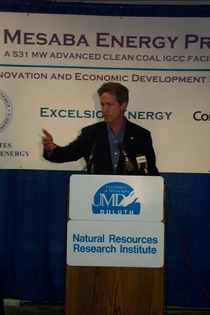The hate continues…
June 3rd, 2014
There are things that I find really offensive about Obama’s policies, most notably that he’s been a corporate toady, toadying for transmission lines, toadying for coal (IGCC and otherwise), his energy policies are a big yawn, much ado about nothing. But to find him offensive in an offensive way, i.e., based on his actions, ??? I just don’t get it. And to do this anonymously. That is a line for me, rather than to publicly own or substantiate opinions or beliefs, rather than to publicly object and act, instead to act out secretly in this way… and given our history of lynching of Indians and African Americans in this country, as volatile as drowning of women deemed witches. This gives me the creeps.
And it’s happened before, many times:
Why is a Hangin’ Truck Driving Around NYC With President Obama on a Noose
Bush (a different bush) Arrested For Hanging Obama in Effigy
I couldn’t remember, much as Nixon, Reagan, and the Bushes were vilified, much more than protests, I do remember dummies of Nixon, and of course comments on the order of Shawn in the bathroom saying he was “making pictures of Richard Nixon.” So I did some looking, and I’d forgotten a few:
And there’s a longstanding history of hanging in effigy:
(and now I can’t find it) … still looking for a choice article that disappeared…
The SW Minnesota 345kV line is going up
October 3rd, 2007
It’s been one of those times, after the computer crash getting everything together again, and doing that on the road, what a mess. But here’s an update, from after a quick trip to Denver for Nancy LaPlaca and Andy Bardwell’s wedding, we took a few days out in SD, in the Black Hills and Badlands. It’s been 40 years or so since I’ve been there, and for sure, everything shrunk! Except for the Crazy Horse Memorial. But on the way back, look what was going on:
It’s soooooooooo sad. There’s a whole lotta diggin’ goin’ on… it’s the 345kV “It’s for wind NOT” line. What? Not for wind??? Yup, here’s why:
Transmission for Dummies – #2
It’s NOT for WIND!
Watching that go up, it’s so depressing, such a clear loss. Worse, it’s the prep for CapX 2020. AAAAAAAAGH!
But where there’s CapX 2020, there’s www.nocapx2020.info!!
And an interesting factoid. I’d expected the conductors to be arranged in delta, but noooooo, take a close look here. They’re vertical, all on one side, and look at these flanges that are on the other side — ready and waiting to add another three arm and another 2085 MVA capacity!
Transmission lines comin’ to town
July 15th, 2006
The transmission line passing, with the pipeline, through lower Scott & Dakota County, near Northfield, goes through Red Wing and then south to Wisconsin through LaCrosse.
Letter: Huge transmission lines coming to community
The Republican Eagle
Published Saturday, July 15, 2006
To the Editor:
Utility infrastructure investments are a 50-year energy policy commitment. Utilities are embarking on spending billions of our dollars on thousands of miles over thousands of property.
Is this necessary for reliability, adequacy of service or system security? No, this infrastructure is being built to facilitate unregulated export of bulk power for profit. What do we get out of it? Transmission lines in our yards.
There are three 345kV lines planned through our community. Two are now beginning the application process: Notice plans have been filed with the Public Utilities Commission. Because Minnesota law gives preference to existing corridors, the line is likely to parallel one on north side of Highway 61 atop the hill west of town, then to Prairie Island, taking a scenic meander through the reservation, back up and over the bluffs, through the Westwood subdivision toward Rochester.
I informed the Prairie Island Indian Community and theyâ??re paying attention, attending transmission planning meetings.
Whereâ??re Red Wing and Goodhue County? I informed the Realtors posting signs in Westwood, city planning, too; no one seemed concerned. The subdivision is an example of poor planning. Itâ??s bad enough theyâ??re allowed to build homes there, but whoâ??s telling residents whatâ??s in store?
These transmission proposals are nothing new. The Prairie Island to Wisconsin line was proposed as â??Line 3a/bâ? in 1998 and has been talked about for years. Transmission links are on my blog at http://www.legalectric.org in the â??Transmission for Dummiesâ? section. These specific lines are in the 2005 Transmission Plan, and public meetings were held last May. I didnâ??t see any city or county representatives there, and I know they were provided notice because the stateâ??s Transmission Plan rules require it.
Will county and city land-use professionals start attending the state meetings so they know whatâ??s in store and wonâ??t be surprised again? Will developers, landowners and land-use officials pay attention to canons of appropriate land-use? Will local governments submit comments about the Notice Plan and participate effectively in the Certificate of Need docket? Will our elected officials represent us?
Carol A. Overland
Red Wing
Carol Overland is running for City Council member at-large.
Taking the farm for transmission — it’s NOT for wind
May 19th, 2006

I’ve been finding snippets of the struggle out in SW Minnesota (PUC eDocket 01-1958) in my inbox that is painful to hear about from afar:
Do you know a Dave Callahan from Xcel ? Callahan is supposed to meet with a couple of us on the transmission line, neighbor diggng in heels as are several others, double circut pay is an issue, access is another…. on the easement compensation sheet, there is a 1099 item, the full paymet is listed here & reported to the feds., then further down the 50% reduction language was covered up by a sticker/arrow pointing to “sign below.” Another case of trickery.
It’s the same arrogant utility attitude that they encountered on the Minnesota side of the Arrowhead project, though the Arrowhead landowners inexplicably decided to pursue an ineffective action at the PUC rather than fight their case in court — they never argued their condemnation case, and even the judge was puzzled, so the opinion says.
Condemnation Part I Download file
Condemnation Part II Download file
And the “Buy the Farm” provision of the Power Plant Siting Act, 116C.63, Subd. 4 — when they lowered the threshold for High Voltagea Transmission Line to 100kV and above, the following year they went and raised the “Buy the Farm” threshold to 200kV and above — the majority of those affected by transmission lines now, because they’re building high capacity low-voltage lines, can’t opt out from living under the line.
And the particularly painful part of it is that party line, “It’s transmission for wind.” It’s NOT transmission for wind — here’s my “Transmission for Dummies #2” – scroll down to “It’s NOT for wind!” Here’s the powerflow that proves it, 213MVA out of the 2085 capacity coming down from Buffalo Ridge at the Nobles substation, the ONLY entry point from Buff Ridge on the line: View image
Here’s the story from the STrib:
Power play: Farmers fight Xcel
Southwestern Minnesota farmers challenge Xcel’s use of eminent domain and the compensation for use of their land.
Joy Powell, Star Tribune
The phone call came one morning during spring planting, when a man from a land-acquisition firm told Loren and Ethelyn Cuperus that part of their small farm near Lakefield, Minn., was condemned for construction of a new Xcel Energy power line.
For months, the couple had insisted that Xcel wasn’t offering an adequate payment to use the land — a 150-foot-wide strip through the middle of their farm in Jackson County. Xcel is moving ahead with the easement, the caller said, as part of a $162 million project to build transmission lines for the growing wind-energy industry.
“We’re not against wind energy,” said Loren Cuperus, 69. “We only want to be treated fairly. They want to bulldoze their way through.”
Depending on the site, Xcel has been offering 50 or 85 percent of the value of the land; farmers can continue to grow crops around the lines. But the Cuperuses and other farmers say that 50 percent is not a fair price for use of their land, for crops that will be reduced, and for damage to nutrient-rich brown loam during construction.
It’s a story that spotlights the controversy over eminent domain, with which governments or utilities can buy property from unwilling sellers for an important public use.
Xcel, which has revenue of $10 billion a year, says its project is essential to operate the above-ground transmission line and provide more electricity, primarily from wind. The new lines will more than double transmission capacity from southwestern Minnesota and boost its burgeoning wind industry, said Paul Adelmann, an Xcel spokesman.
In 2003, the Minnesota Public Utilities Commission (PUC) approved Xcel’s highest-voltage power line, which will stretch 94 miles from Brandon, S.D., near Sioux Falls, to Lakefield. It also involves three smaller lines and other improvements to strengthen the entire electricity network, from the blustery Buffalo Ridge area in southwestern Minnesota to the Twin Cities and throughout the region, Adelmann said.
So far, Xcel has reached agreements with owners of 102 of the 395 parcels involved. Another 68 parcels are being negotiated. Owners of 225 parcels have yet to receive offers.
An issue for owners of 80 parcels, including the Cuperuses, is whether they’ll receive less because they already have older power lines that would be replaced or upgraded.
To deal with farmers, Xcel hired an Iowa firm, Graham Land Acquisition Associates. It specializes in helping public works, utilities and economic development projects acquire land through condemnation.
Loren and Ethelyn Cuperus and other farmers say they’ve been “threatened” with condemnation during encounters with the firm’s representatives.
Dave Callahan, who leads the siting and land rights department for Xcel Energy, said he has heard the complaints and is trying to work out solutions.
“When we ask the landowners for specifics, what we find out is that the agent just told them the truth and they didn’t like what they heard,” Callahan said. “This is an essential service project that was approved by the PUC.”
Figuring fair compensation
On a Sunday last January, the Cuperuses, their widowed neighbor, Beverly Voehl, and a farmer who rents land on the 400-acre Cuperus farm met with a Graham representative, Brian Jennings.
The farmers said Jennings told them that if they wrote down what he was saying, he would not tell them any more.
Attempts to reach Jennings for comment this week were rebuffed by a Graham Land Acquisition official, Carroll McCracken. “We are under contract [with Xcel] to not talk with you for this project … so you have to contact Xcel Energy,” McCracken said.
Voehl ended up signing papers for an Xcel easement, although she felt bullied and disrespected, she said. The Cuperuses refused to sign because they would have been paid at a lower rate for some of their land.
That’s because in 1966, Loren’s father received a one-time payment for easements. Interstate Power and Light Co. paid his father $445 for a strip of land 75 feet wide and a half-mile long, Cuperus said. The right-of-way encompassed five “H-frame” poles, for which his father received $65 per pole, plus $120 for a wire overhang.
Now, new single poles are to replace the older double poles on the farm as part of Xcel’s 345-kilovolt line from South Dakota to a Lakefield substation in Jackson County.
Where no power poles exist, Xcel has paid farmers $3,060 per acre, which represents 85 percent of the current value of the land. The farmers still can farm on it.
Where poles already exist and will be replaced or updated, farmers have been offered 50 percent of the value, or $1,530 an acre, for the perpetual easement. Farmers still are negotiating with Xcel on that amount.
Cuperus and other farmers also say they should be receiving more for crop damage and dirt compaction and be assured timely repair of drainage tile that gets broken during construction.
“I probably have never negotiated with a landowner who didn’t think they should get more,” Callahan said. “That’s why we rely on established appraisal practices.”
Callahan said Xcel added a “signing bonus” of $1,000 for those who agreed to an easement.
‘Green’ energy is in demand
This spring, Xcel became the nation’s biggest buyer of wind energy, according to the American Wind Energy Association.
Utilities in the region expect to need 6,000 megawatts of new electricity generation to meet needs in the next 15 years, with the Twin Cities the biggest draw on that power, according to the state Commerce Department.
The department is calling on Xcel Energy to boost investments in wind energy and use less natural gas. Xcel faces a tight construction schedule as it replaces old H-style powerlines with single poles for the higher-voltage lines, Callahan said.
The utility is launching “quick-take” processes to acquire land through condemnation, according to documents sent to Loren and Ethelyn Cuperus. A court date is set for May 31, but negotiations continue.
The couple’s friend, Dave Ackermann of Lakefield, is another farmland owner fighting for higher compensation for the Xcel easements. Down the road, he said, it’s not just rural people who could be affected.
“How would people in the city like to have a 345-kilovolt line going their yard,” Ackermann asked, “and their kids playing under it?”
Joy Powell â?¢ 612-673-7750
Did you catch this LIE:
Xcel, which has revenue of $10 billion a year, says its project is essential to operate the above-ground transmission line and provide more electricity, primarily from wind. The new lines will more than double transmission capacity from southwestern Minnesota and boost its burgeoning wind industry, said Paul Adelmann, an Xcel spokesman.
Ya know, I’m a math idiot, but I know that 213 out of 2085 is NOT “PRIMARILY!”
And did you catch this half truth:
The new lines will more than double transmission capacity from southwestern Minnesota..
.
Change the “from” to “through” and you’ve got it — a line running from Sioux Falls (Split Rock sub) to Lakefield Junction isn’t going “from” SW MN, it’s going THROUGH it.
The farmers out there know who pays and who benefits, and it’s too bad that deals were made that allow Xcel to say “it’s for wind” when it’s not, when only 213MVA of the 2085MVA capacity is coming off of Buffalo Ridge. Xcel’s engineer, Rick Gonzalez, went over the powerflows in testimony in the SW MN case, it’s there in the record for anyone who cares to look…
Ray Cox thinks coal gasification is proven — HA!!!!!!
October 30th, 2005
It’s so goofy when people pontificate about something they know nothing about.

Coal gasification, the technology of the Mesaba DEMONSTRATION project, is anything but proven. Even the DOE knows this, and states “DEMONSTRATION” in all their materials – -check the DOE’s NOI, which acknowledges the risk of this project and discusses the serious technological problems. Where does Ray get these crazy ideas? It’s like the guy at the Taconite meeting who was trying to say that it wasn’t a wetland — if he won’t believe his eyes, I wish he’d read the Notice of proposed Floodplain and Wetlands Involvement! Humans have such aversion to reality!
The most recent attempt at coal gasification was the Wabash River plant, where they repowered an old coal plant with a 262MW coal gasification DEMONSTRATION project.

Imagine this nestled in the woods and bogs of the Range!
Mesaba and Wabash are DEMONSTRATION projects, deemed by the DOE as too risky for private development and which must be supported by grants and federally guaranteed loans.
Here’s the Wabash River Coal Gasification Repowering Project – Final Technical Report which will tell you all about the problem experienced.
Construction costs were twice what they expected
Wastewater was “routinely” in violation of the permit due to high levels of selenium, cyanide and arsenic, and the problem had not been corrected by the time of this report.
Plant had 36-38% efficiency factor – that’s regarded as GOOD!
Plant was out of service much of the demonstration time, towards end had 60% capacity factor. That’s 19% better than an NEG Micon wind turbine!
They often say that the plant was “unavailable” and it would be a tad bit more honest if they’d say that the plant was shut down because they couldn’t or didn’t pay their gas bill!
Here’s a couple more blurbs on Wabash:
Wabash River Coal Gasification Project: A DOE Assessment This report is from January 2002, after the “final” report.
Wabash River Coal Gasification Project: An Update This report is from September 2000, just after the “final” report.
Here’s the CCPI Public Abstract for Mesaba.
Here’s a handout from the meeting, Project Facts, Mesaba Energy Project.
Here’s a Power Point from October 2005! Excelsior Energy, Inc.: A CCPI Round 2 Project.
Coal gasification goes back a bit further, but not much in the way of projects. There have been very few over the last 30 years. In the 70’s, there were two STEAG plants in Europe, and following that, air blown and oxygen blown were compared with the STEAG plants, with the US plants winning out. The EPRI report on this was prepared by FLOUR, the Mesaba engineers on the project (see Economic Evaluation of GCC Power Plants based on the STEAG Combined-Cycle Design and Comparison With a U.S. Combined-Cycle-Based System, EPRI AF-1288; see also Economic Studies of Coal Gasification Combined Cycle Systems for Electric Power Generation, EPRI AF-642, Flour; An Economic Evaluation of MHD-Steam Powerplants Employing Coal Gasification, RI 7796, Bergman, Plants, Demeter & Bienstock).
Yup, Ray’s not the only one who hasn’t a clue, but that’s what happens when you don’t do your homework and rely on lobbyists — for this “Two Lobbyists and a Wife” project, that’s an obviously flawed approach!

I feel another “Generation for Volt Dolts” coming on…



